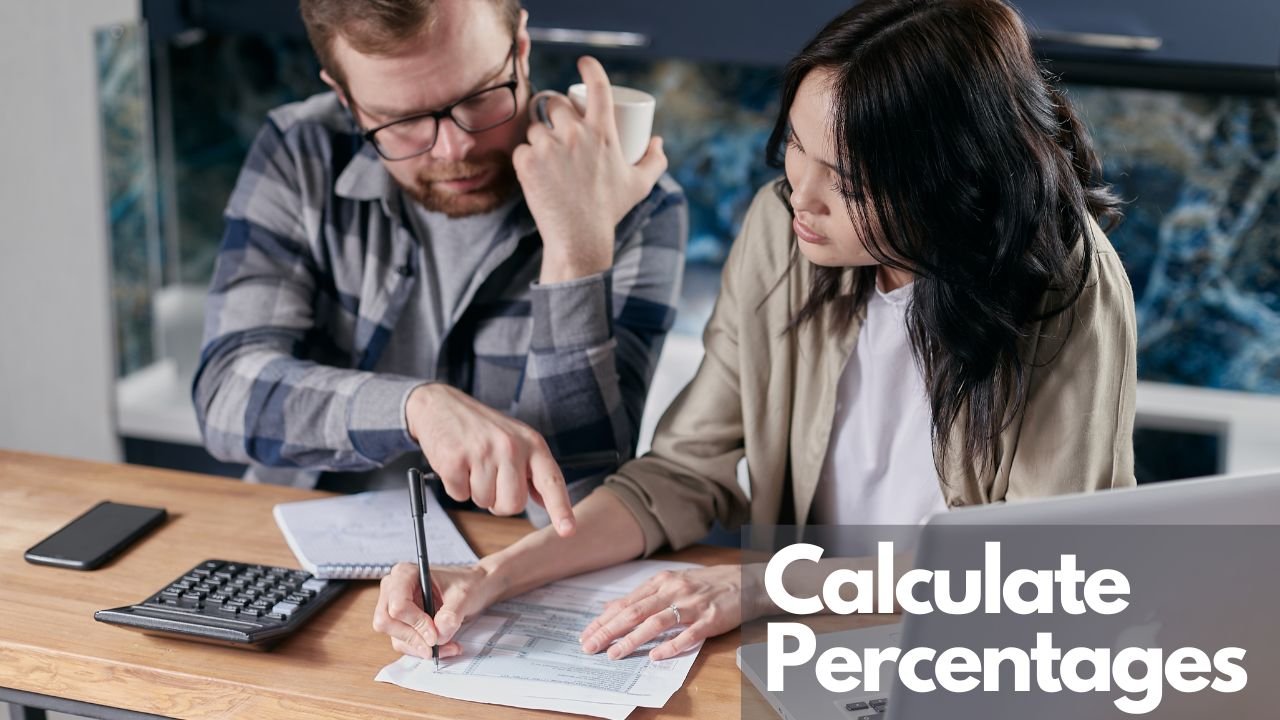Introduction
Percentages play a significant role in everyday life, whether you’re shopping, budgeting, or working on academic projects. This guide aims to provide a clear understanding of how to calculate percentages with practical examples and advanced applications for deeper insight.
1. What Does Percentage Mean?
A percentage represents a number as a fraction of 100. For example, 50% means 50 out of 100, or half of a whole.
2. Basic Formula for Calculating Percentages
To calculate a percentage, use the following basic formula:
$$Percentage\;\left(\frac{Part}{Whole}\right)\;\times\;100$$
Example: If you scored 40 out of 50 on a test, your percentage would be:
$$Percentage\;\left(\frac{40}{50}\right)\;\times\;100\;=\;80\%$$
3. How to Calculate Percentage Increase and Decrease
Understanding how to calculate percentage change is useful for analyzing data trends.
Percentage Increase Formula:
$$Percentage\;Increase\;\left(\frac{New\;Value\;–\;Original\;Value}{Original\;Value}\right)\;\times\;100$$
Percentage Decrease Formula:
$$Percentage\;Decrease\;\left(\frac{Original\;Value\;-\;New\;Value)}{Original\;Value}\right)\;\times\;100$$
Example: If the original value was 200 and the new value is 250:
$$Percentage\;Increase\;\left(\frac{250\;-\;200)}{200}\right)\;\times\;100\;=\;25\%$$
Adding references from educational math websites or textbooks could strengthen the trustworthiness of this content.
4. Real-Life Examples
– Shopping Discounts: If an item is priced at \$50 and there’s a 20% discount, the discount amount would be:
$$Discount\;Amount\;\left(\frac{20}{100}\right)\;\times\;50\;=\;\$10$$
– Exam Scores: To find the percentage of marks obtained, apply the basic formula for percentages.
5. Quick Tips for Faster Percentage Calculations
– Round Off Values: Rounding numbers can make mental calculations quicker.
– Memorize Common Fractions: Knowing that 25% equals 1/4 or 50% equals 1/2 can help speed up calculations.
6. Advanced Applications of Percentages
Percentages aren’t limited to basic math—they’re essential in fields like finance, science, and data analytics.
Compound Interest Calculation:
$$A=P\;\left(1\;+\;\frac rn\right)\;^{nt}$$
Where:
A = Final amount
P = Principal amount
r = Interest rate
n = Number of times interest is compounded per year
t = Number of years
Example: Calculating compound interest over time helps understand investment growth.
Additional Tip: Verify complex calculations using authoritative online tools or calculators for accuracy.
Conclusion
Calculating percentages is an invaluable skill applicable in many real-life scenarios. This guide aims to make percentage calculations understandable and practical. To build confidence, continue practicing and using reliable resources for more advanced problems. For a more interactive experience, visit our Online Percentage Calculator and practice.
